Copenhagen Travel Guide: Where to Sleep, Dine, Shop & More
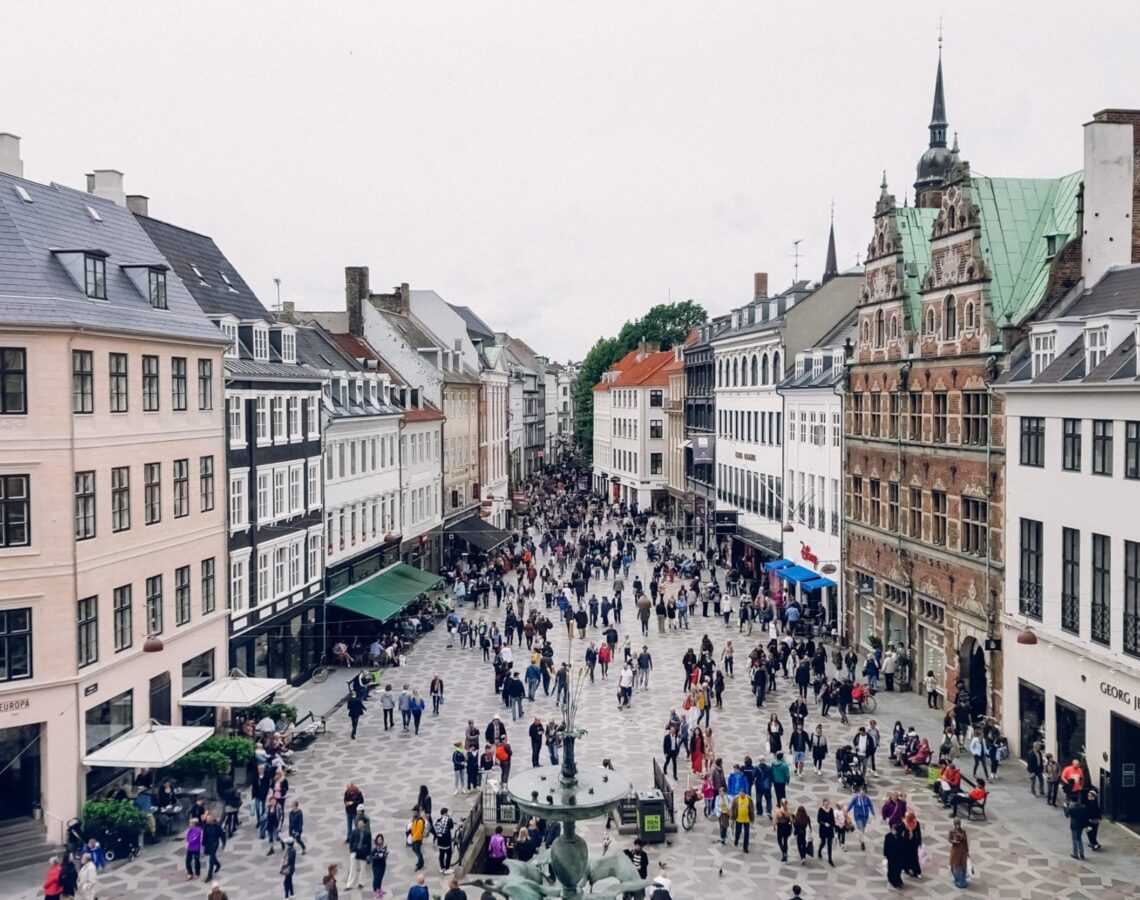
Founded nearly a millennium ago by Viking settlers and the first Danish king, Sweyn I Forkbeard (yes, Forkbeard), Copenhagen is one of the world’s happiest cities and Scandinavia’s capital of cool. But how did the Danes become so darn happy and effortlessly hip? It may have something to do with the philosophy of hygge (hoo-gah) — a sense of comfort, intimacy, and living in the moment.
In Copenhagen you’ll feel laid back hygge vibes exuding from locals as you pass them by at sidewalk cafes and Michelin star restaurants, while shopping the latest streetwear styles, even as you attempt to keep up with them on their insanely efficient bike lanes — complete with stoplights timed to the average cycling speed.
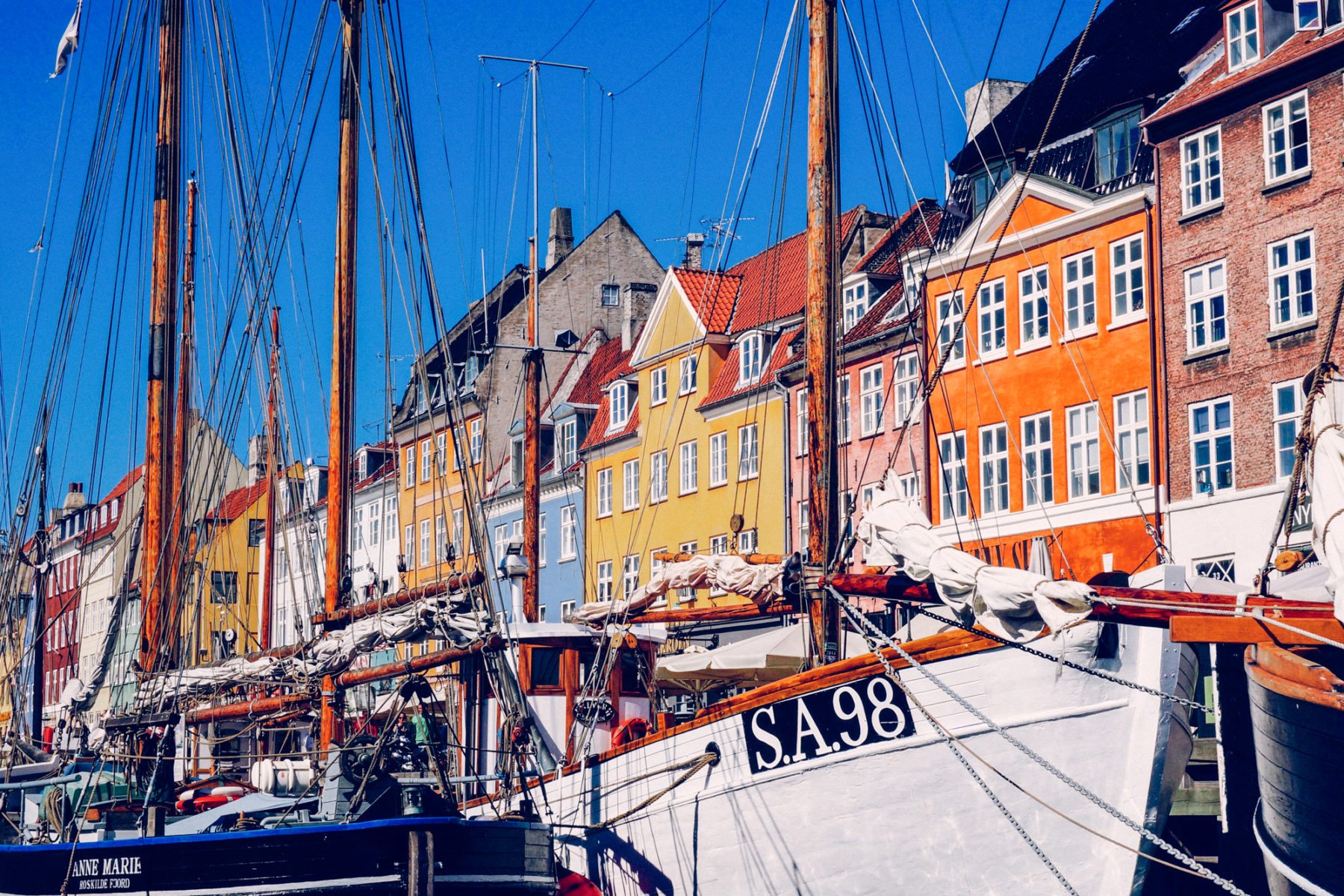
Copenhagen Neighborhood Guide
When searching for a hotel or short-term rental in Copenhagen, keep neighborhoods in mind. Here’s a quick breakdown:
- INDRE BY → Indre By is Copenhagen’s city center, and literally means “inner city.” In this central neighborhood, you’ll find museums, amusement parks (Tivoli Gardens), gourmet restaurants, touristy Nyhavn, and the gorgeous gardens at Rosenborg Palace. Strøget, one of Europe’s longest pedestrian streets, is Copenhagen’s aorta and offers a wealth of world-class dining and shopping options.
- VESTERBRO → Copenhagen’s former red light district is now the fourth “most hipster neighborhood on earth,” according to Thrillist. The neighborhood is home to Tivoli Gardens, Carlsberg Brewery, the hip Café Dyrehaven, and incredible shops like Kyoto, Designdelicatessen, and the Playtype Store.
- ØSTERBRO → Østerbro is a family-friendly neighborhood which features wide boulevards, Denmark’s largest public park, Fælledparken, posh shopping like Normann Copenhagen, and hip restaurants; we’re looking at you, Geranium.
- CHRISTIANSHAVN & HOLMEN → Christianshavn and Holmen are home to some of Copenhagen’s best restaurants, including the World’s Best Restaurant (2010, 2011, 2012, 2014, 2015), Noma. You’ll also find great cultural experiences in these neighborhoods, like Christiania — the self-governed freetown in the heart of Copenhagen, Danish Architecture Centre, and the city’s most iconic church, Vor Frelsers Kirke (Church of Our Saviour), which has a black and gold serpentine spire you can climb atop.
- NØRREBRO → Nørrebro, like Christianshavn and Holmen, features a number of mouthwatering restaurants, including Relæ and the world’s only Michelin-starred Thai restaurant, Kiin Kiin. The multi-cultural neighborhood is popular for young locals who frequent the wide range of hip and hygge cafés. If you thought San Francisco’s $4 toast was something — you ain’t seen nothin’ yet: Fætter Fætter has perfected artisanal toast.
- FREDERIKSBERG → The posh neighborhood of Frederiksberg, named for the Frederiksberg Palace and Gardens, is, of course, one of Copenhagen’s most fashionable neighborhoods. Here you will find local boutiques like Sofie Schnoor’s flagship store, and the opulent Mielcke & Hurtigkarl restaurant at Frederiksberg Gardens.
- ØRESTAD → The Ørestad neighborhood (København S), is a primarily residential area surrounded by nature just outside the city of Copenhagen. The relatively new neighborhood features a number of beautifully designed buildings by award-winning architects, including Bjarke Ingels and Jean Nouvel.
Getting Around Copenhagen
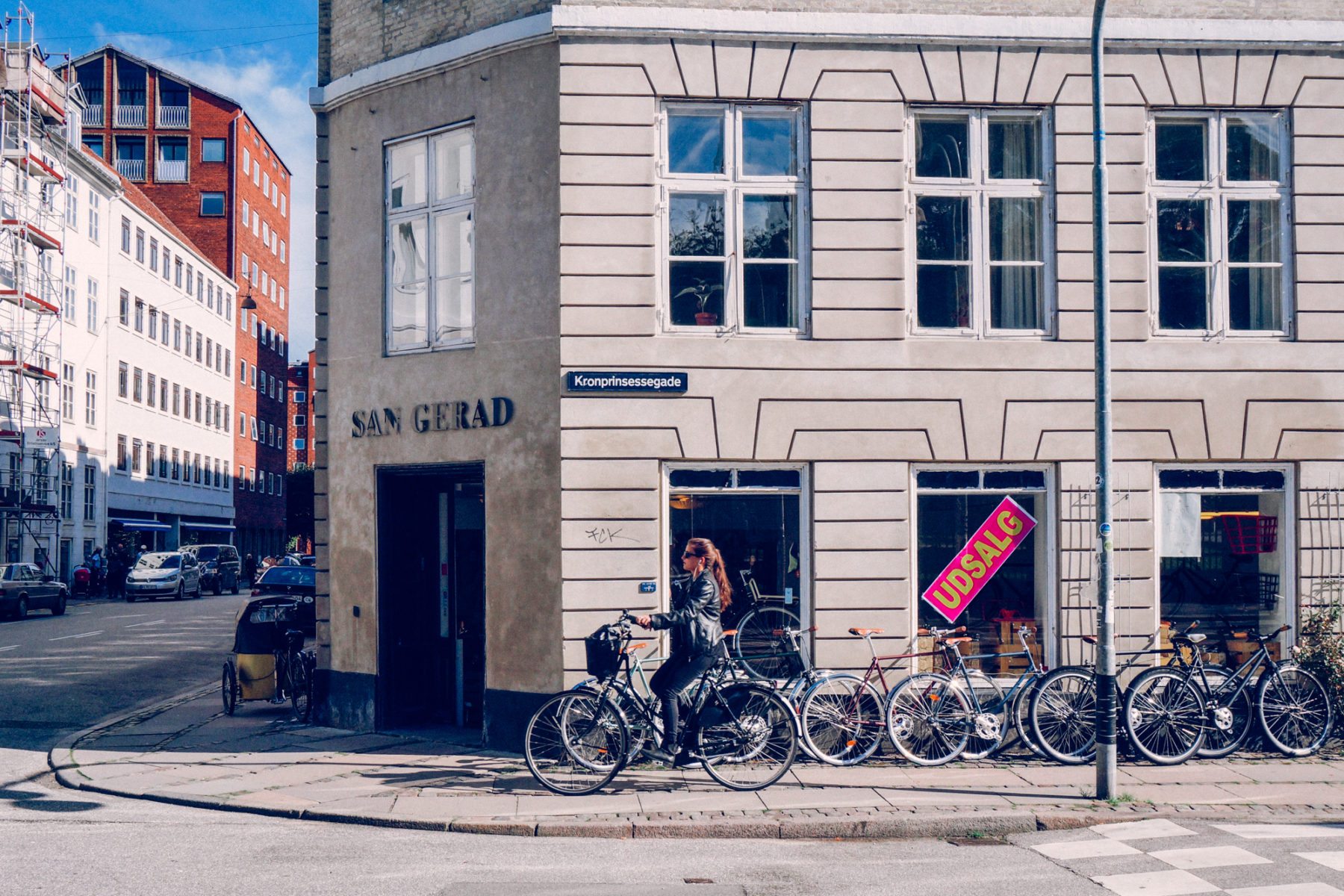
With just 33.4 square miles, Copenhagen is incredibly easy to get around by foot, bicycle, and metro. Home to one of Europe’s longest pedestrian streets, Copenhagen is ridiculously easy to get around on foot. In fact, exploring the city on foot may be the best option for tourists, as cycling is serious business.
Ranked the most bike-friendly city in the world, Copenhagen is a cyclist’s dream. Tourists are often overwhelmed by the number of bikes zipping by on city streets and the 242-mile-long bike lane network, complete with air pumps and stoplights timed to the average cycling speed to minimize stop-and-go traffic. If you can’t keep up with the steady pace of other bikers, get off the path!
The Københavns Metro is fairly straight forward. The 24/7 rapid transit system has 22 stations, each marked with a large “M” and information screens. Tickets can be purchased at ticket machines in the station, or at 7 Eleven kiosks. The machines accept Danish Krones and most major credit cards.
Where to Sleep in Copenhagen
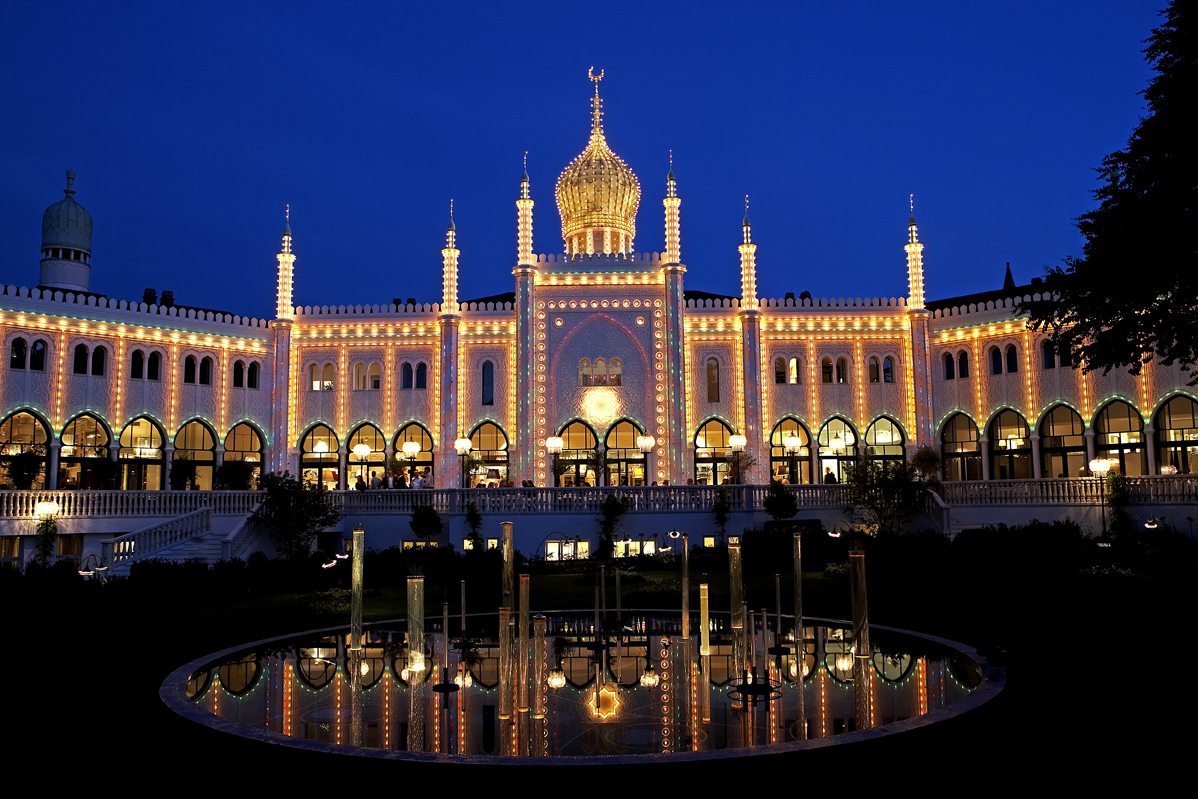
TREAT YOURSELF → If you’re really looking to splurge, look no further than the boutique Nimb Hotel, located in Copenhagen’s famous Tivoli Gardens — home to one the world’s oldest continuously operated roller coaster. The stunning Moorish-style palace features 17 elegant and impeccably designed rooms with antique and Danish modern furniture, and was built in 1909 by Tivoli architect Knud Arne-Petersen as an “Arabian fantasy castle.” Centrally located, Nimb Hotel is just minutes away from central Copenhagen and a 15 minute walk to Christiansborg Palace.
Nimb Hotel | $$$$ | Bernstorffsgade 5, 1577 Copenhagen, DK | nimb.dk | Book a room from $516
LIVE LIKE A LOCAL → Live the hygge life in Copenhagen by renting an Airbnb and experiencing the city as the locals do. Warning: most residential buildings in Copenhagen are five to six story walk ups, with no elevator, so check-in with your Airbnb host before booking in case this might be an issue for you. Most of the apartments available on Airbnb are simply and tastefully furnished in the timeless, modern Scandinavian style.
Airbnb | $-$$$$ | Get $40 off your first Airbnb rental
Where to Dine in Copenhagen
Copenhagen is not just Scandinavia’s capital of cool; it’s the culinary capital, too. In 2015 alone, 18 Michelin stars were awarded to 15 restaurants in the Danish capital. Copenhagen’s red-hot food scene has garnered worldwide attention for delicious, local, sustainable, and organic food — AKA: the New Nordic movement. Some people visit Copenhagen for design, others visit Copenhagen strictly for the food. These are a few of our favorite spots.
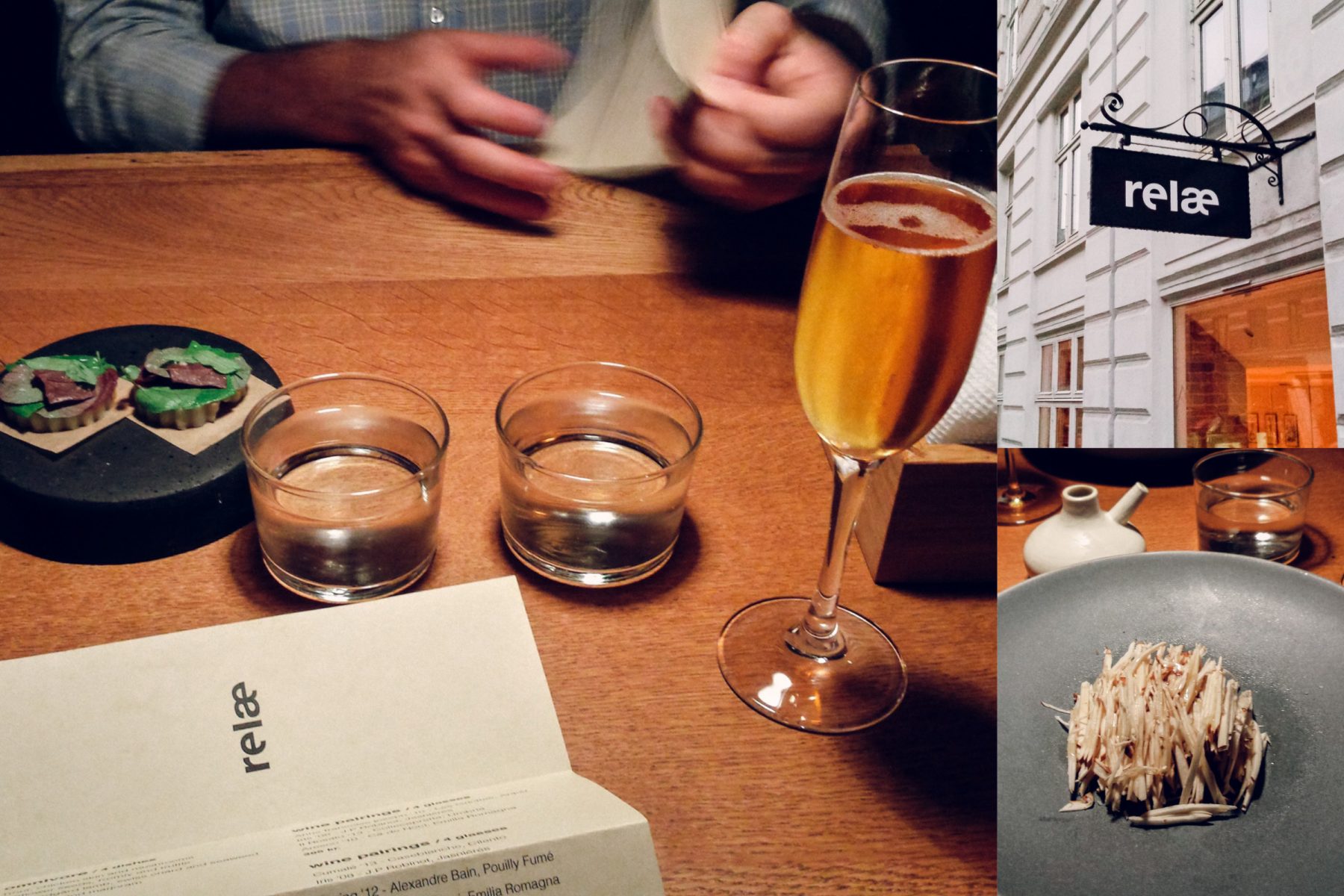
FORGET ABOUT NOMA → Relæ is the cheapest Michelin-star restaurant you’ll find in Copenhagen. Helmed by Christian Puglisi, a veteran of Copenhagen’s Noma, this unpretentious restaurant serves up “tasty food, no muss, no fuss.” On the frontline of the New Nordic cuisine movement, Relæ focuses on simple and hyperlocal ingredients, sustainability, and quality. The daily menu is thoughtfully crafted with surprising dishes, like trout cooked in chicken fat and topped with chanterelles mushrooms, or corn ice cream with dusted with ground popcorn. Book a table at least three weeks to two months in advance, or try to grab a seat at the bar where you can watch the chefs work. Can’t make it to Copenhagen? Check out chef Christian Puglisi’s Relæ: A Book of Ideas.
Relæ | $$$$ | Jægersborggade 41, 2200 Copenhagen, DK | restaurant-relae.dk
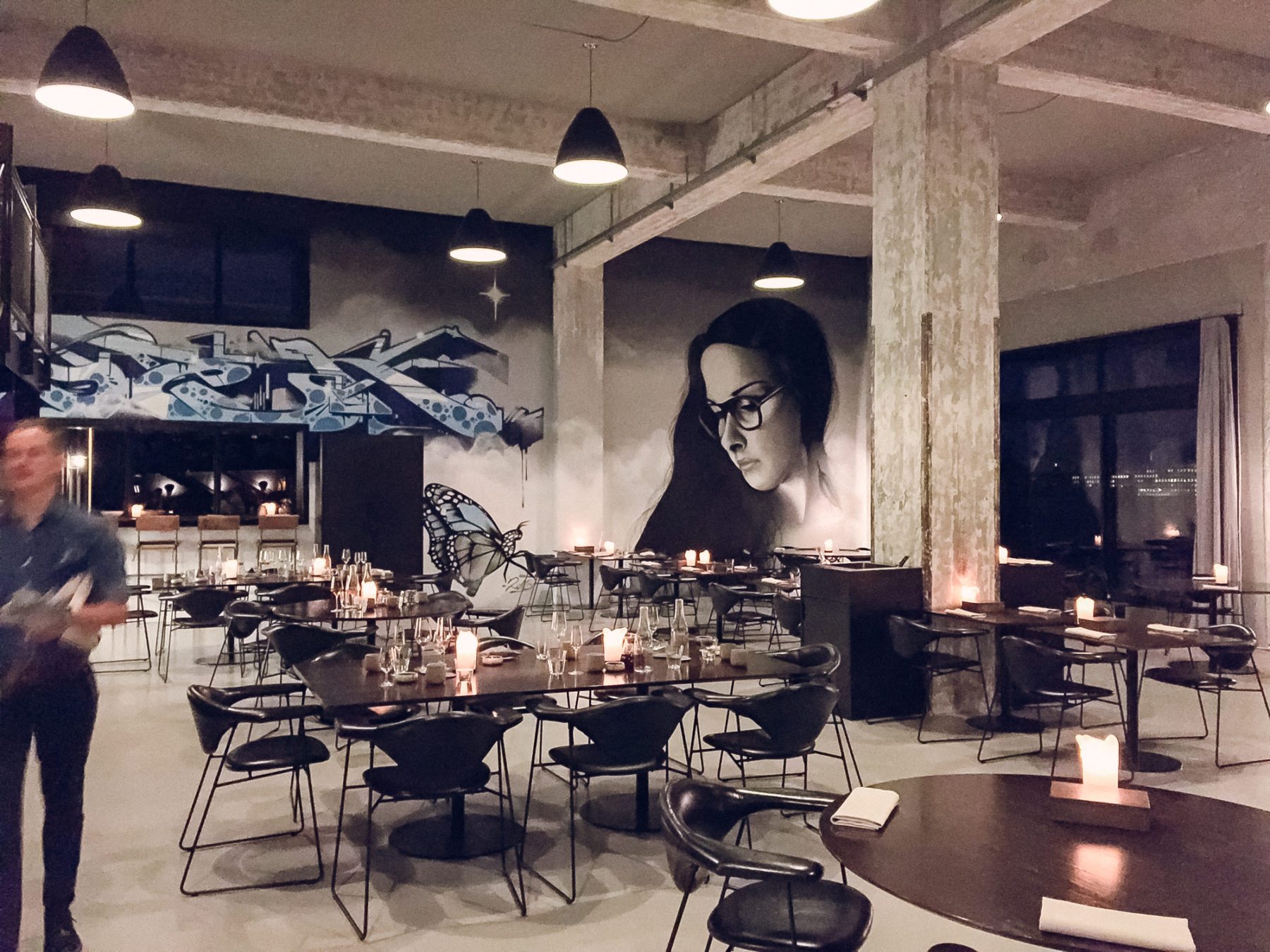
DINE WITH THE LOCALS → Noma still reigns as Copenhagen’s — and the world’s — culinary king, but Amass is a likely successor. Led by Noma vet, chef Matt Orlando, Amass opened in 2013 in an industrial area of Copenhagen called Refshaleøen, and serves up global dishes (with a New Nordic twist) made from produce sourced from the kitchen’s backyard garden. It doesn’t get any more Danish, or New Nordic, than that! While Amass has not yet earned a Michelin star, it’s not far off. In 2016, it found its way to the Michelin Guide. If you do eat here, expect some delicious gourmet foot, and try to book the community table for a fun experience with locals and other visitors.
Amass Restaurant | $$$$ | Refshalevej 153, 1432 Copenhagen, DK | amassrestaurant.com
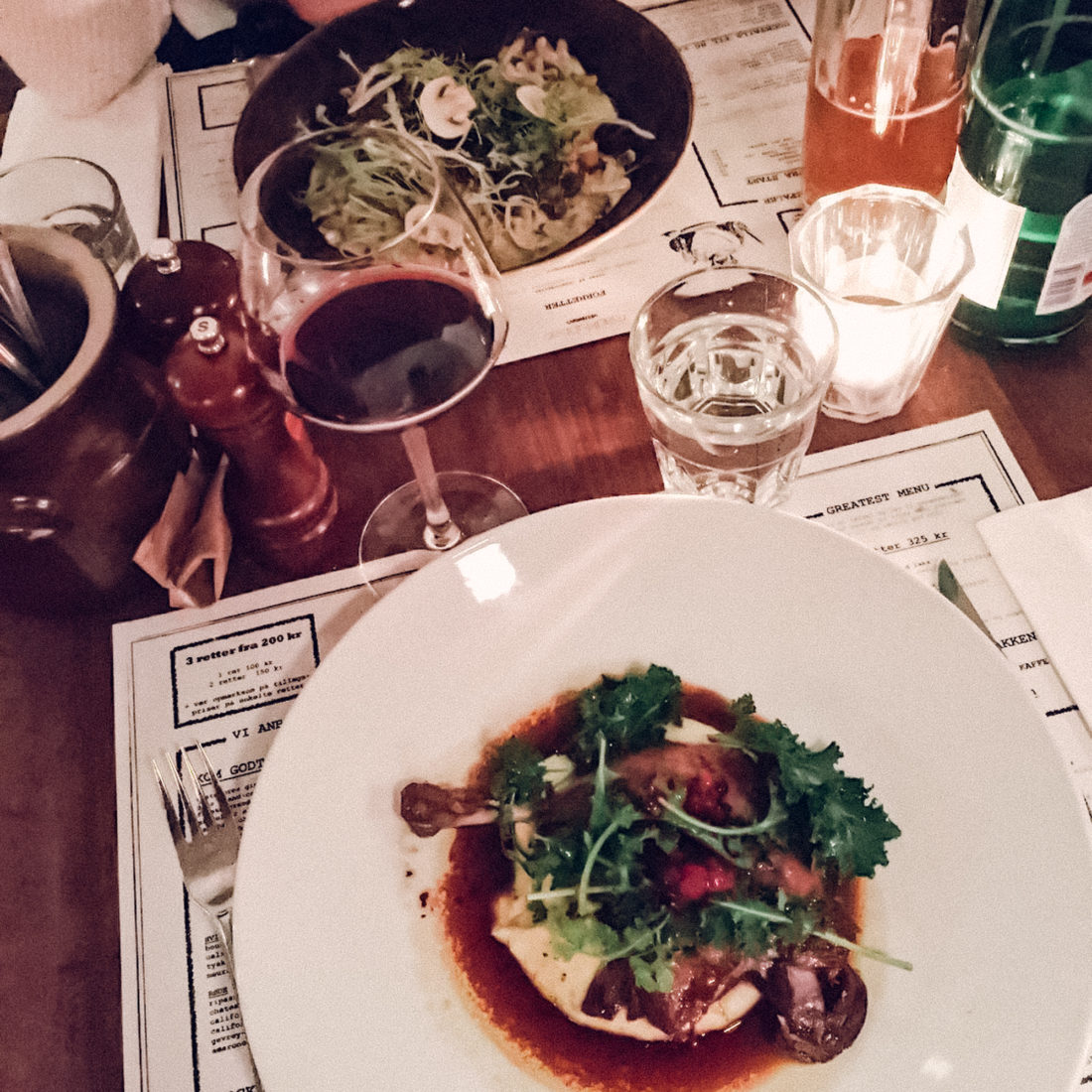
GIVE YOUR WALLET A BREAK → Not every dinner in Copenhagen can be at a five (or Michelin) star restaurant. Reasonably-priced Madklubben is the answer for those nights. Serving un-compromised Modern European cuisine, three courses will run you 200 DKK, approximately $30 USD — a steal by Copenhagen standards.
Madklubben Vesterbro | $$ | Versterbrogade 62, 1620 Copenhagen, DK | madklubben.dk
Where to Drink Coffee in Copenhagen
When you think of the top coffee-consuming countries in the world, a few may come to mind: Italy, Colombia, Portugal, maybe even the U.S., if we’re counting venti drinks from Starbucks. Wrong, wrong, wrong, wrooooong. Scandinavian and other northwestern European countries dominate the list, and Denmark lands in 7th place. Copenhagen’s café culture will not just dazzle you, it will likely remind you of San Francisco’s third-wave coffee scene, and newer coffee shops like St. Frank in Russian Hill.
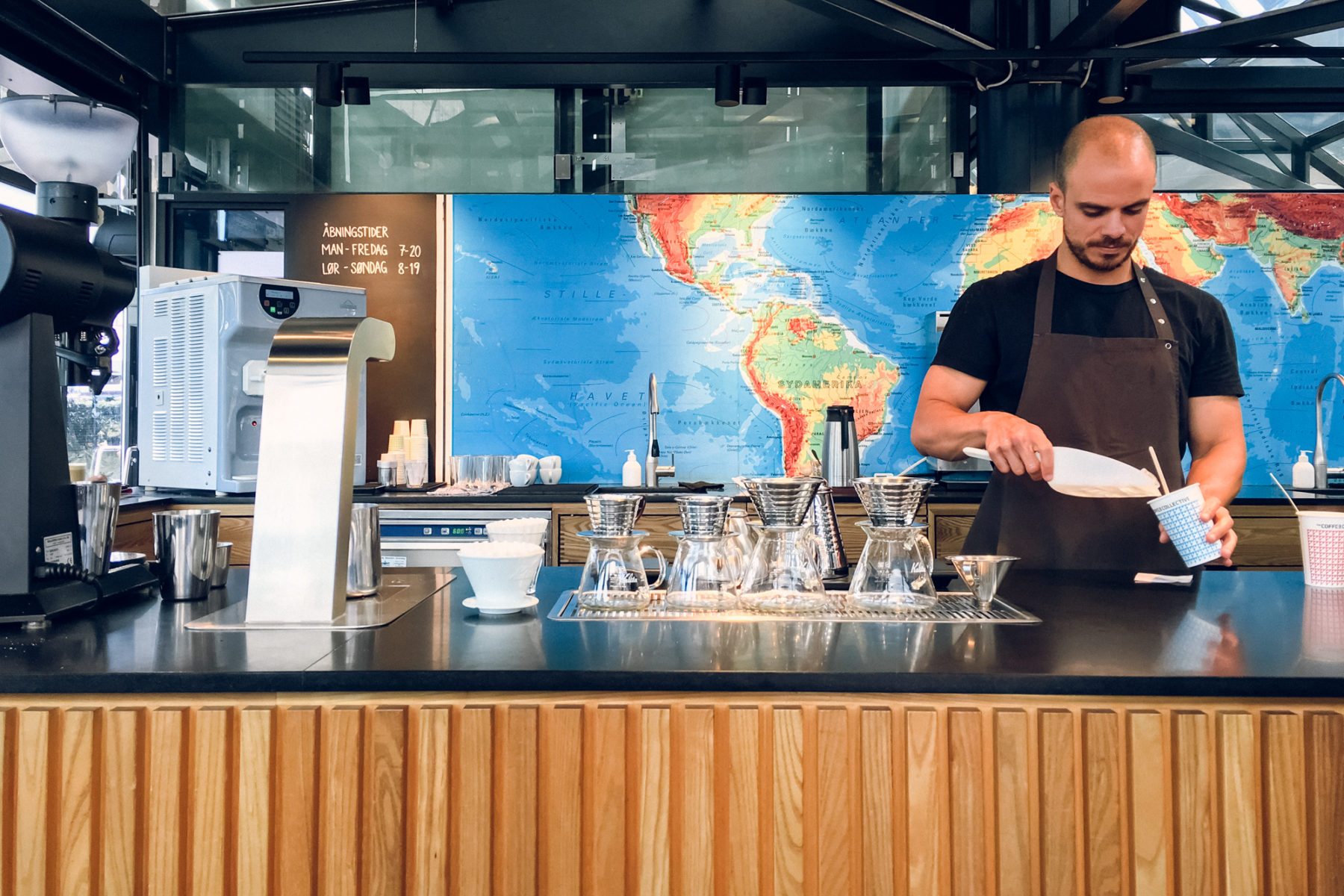
GOD KAFFE → Our favorite café in Copenhagen is The Coffee Collective. The Coffee Collective is a micro roastery with three cafés in Copenhagen, and a roasting school. Their team is devoted to making the best coffee, from farming to brewing, and it shows — without any pretentiousness. If you can’t make it to Copenhagen, check out The Coffee Collective’s monthly international coffee subscription; each month they send three bags of whole roasted beans (250 grams each) for just $33, including shipping!
The Coffee Collective | $ | Godthåbsvej, Jægersborggade, Torvehallerne | coffeecollective.dk
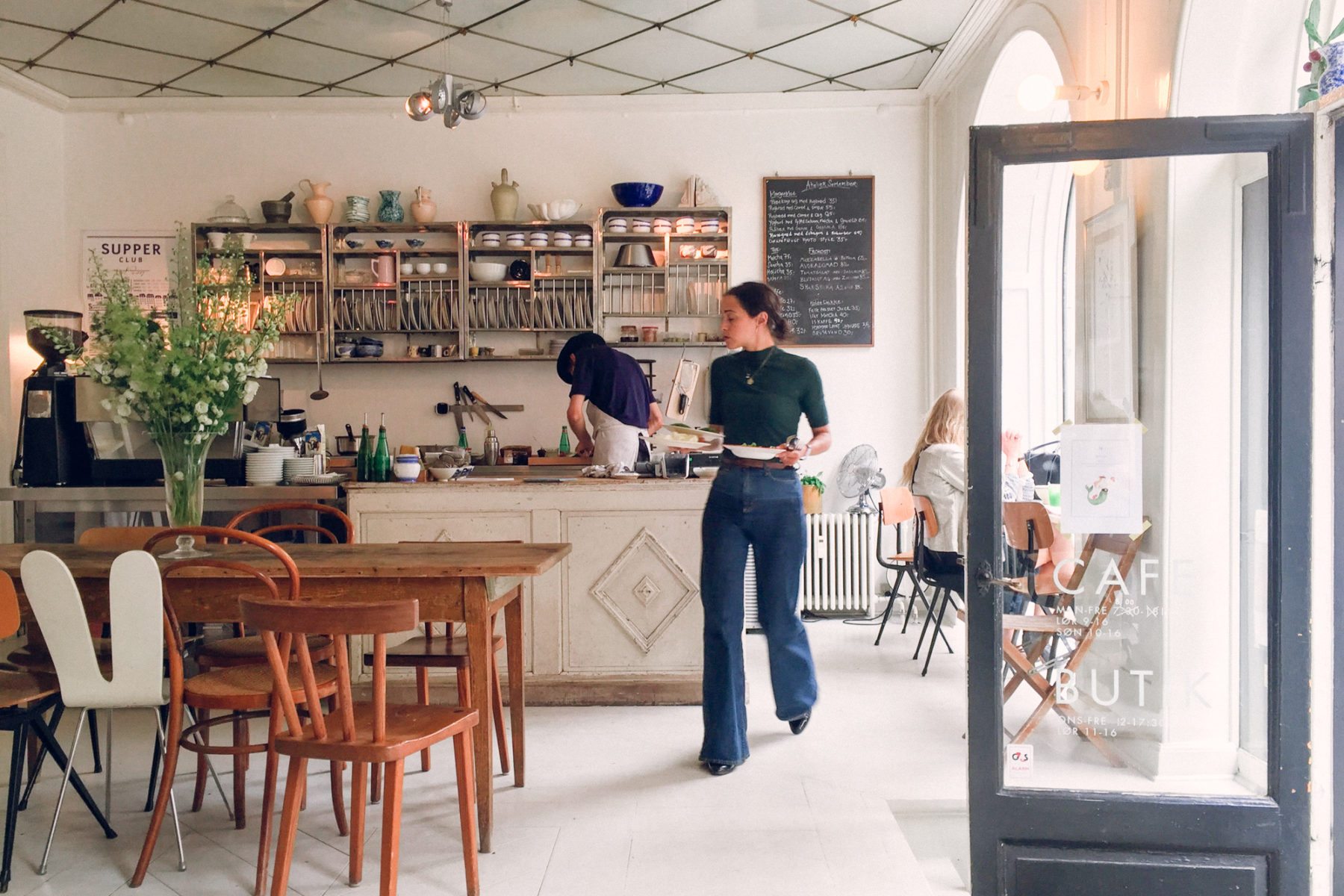
AVOKADO + KAFFE = ? → So you thought Trouble Coffee and The Mill were the end-all-be-all of artisanal toasts? Copenhagen’s Atelier September elevates the $4 toast movement (including the price!). Come for the aesthetically pleasing atmosphere and equally Insta-worthy food, and stay to soak in the hygge ambiance of Copenhagen. Don’t skip the avokado toast or the matcha latte.
Atelier September | $$ | Gothersgade 30, 1123 Copenhagen, DK | atelierseptember.dk
Where to Shop in Copenhagen
Scandinavian style is huge right now. You’ll find Scandinavian influence everywhere from interiors of coffee shops like St. Frank to your best friend’s apartment, the racks of Rand + Statler to your very own closet. On the cutting-edge of the latest trends in home and fashion, Copenhagen’s chic shops will be a danger to your wallet.

YOU’LL NEVER WANT TO LEAVE → Hay House is a must-visit when visiting the Danish capital. Located on Strøget, Copenhagen’s arterial pedestrian shopping street, Hay House is an interior design store selling its own line of coveted furniture, textiles, and other design objects which can be easily packed and brought home as gifts (or for yourself). The store is laid out as an apartment with great ideas for your home and workspace. You’ll never want to leave.
Hay House | $$$ | Østergade 61, 1100 Copenhagen, DK | hay.dk

SHOP TILL YOU DROP → Henrik Vibskov is one of Denmark’s most iconic fashion designers, and a leader of the New Nordic fashion movement. Vibskov’s Copenhagen boutique sells his own prêt-à-porter and avant garde mens and womenswear collections, as well as curated items from fellow Danish designers, Stine Goya and Bibi Ghost, and international labels like Comme des Garçons.
Henrik Vibskov Boutique | $$$ | Krystalgade 6, 1172 Copenhagen, DK | henrikvibskovboutique.com
 MUSEUM OF DESIGN, OR DEPARTMENT STORE? → Illums Bolighus is the best place to see Danish design featured all under one roof. From clothing, to homewares, furniture, lighting, audio, and more, you will surely find a gift for everyone on your list here, as well as inspiration for your next home project.
MUSEUM OF DESIGN, OR DEPARTMENT STORE? → Illums Bolighus is the best place to see Danish design featured all under one roof. From clothing, to homewares, furniture, lighting, audio, and more, you will surely find a gift for everyone on your list here, as well as inspiration for your next home project.
Illums Bolighus | $$$ | Amagertorv 10, 1160 Copenhagen, DK | illumsbolighus.com
Sights to See in Copenhagen

PART OF HER WORLD → Commissioned in 1909, The Little Mermaid is a bronze statue by Edward Eriksen depicting Hans Christian Andersen’s fairytale of the same name. Small and unimposing, the statue is Copenhagen’s best-known tourist attraction and icon.
The Little Mermaid | Langelini, 2100 Copenhagen, DK | mermaidsculpture.dk

DIZZYING VIEWS → Danes have had an eye for design since at least 1695, if Vor Frelsers Kirke (Church of Our Saviour) tells us anything. The 17th century baroque-style church features a 312-foot black and gold serpentine spire, accessible via a winding 400-step staircase.
Vor Frelsers Kirke | Sankt Annæ Gade 29, 1416 Copenhagen, DK | vorfrelserskirke.dk
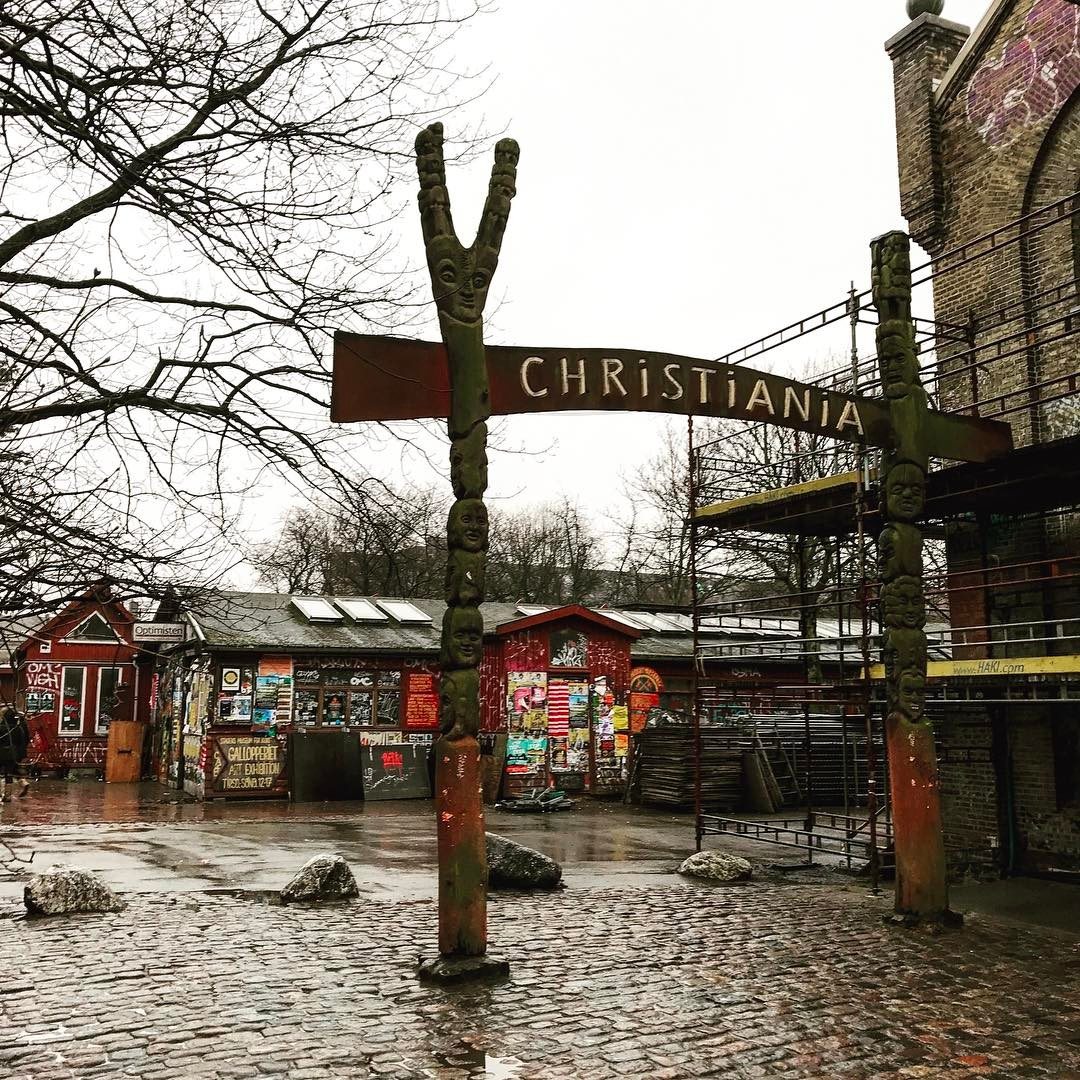
AN ANARCHIST PARADISE → The free town of Christiania is an autonomous neighborhood in Copenhagen’s Christianshavn district. Built on an abandoned military base, Christiania was founded in the 1970s by artists and squatters and established as a social experiment. Truly one-of-a-kind, Christiania is the world’s only self-governing structure and has three simple laws: no photos, no running (and no cars) — running incites panic, and — wait for it — have fun. While walking through the anarchist neighborhood you’ll pass by open air-hash and marijuana markets, vibrant murals, amphitheaters, and restaurants. Stop by the vegetarian kitchen and club, Morgenstedet, for an organic and delicious meal.
Christiania | Christianshavn, Copenhagen, DK
